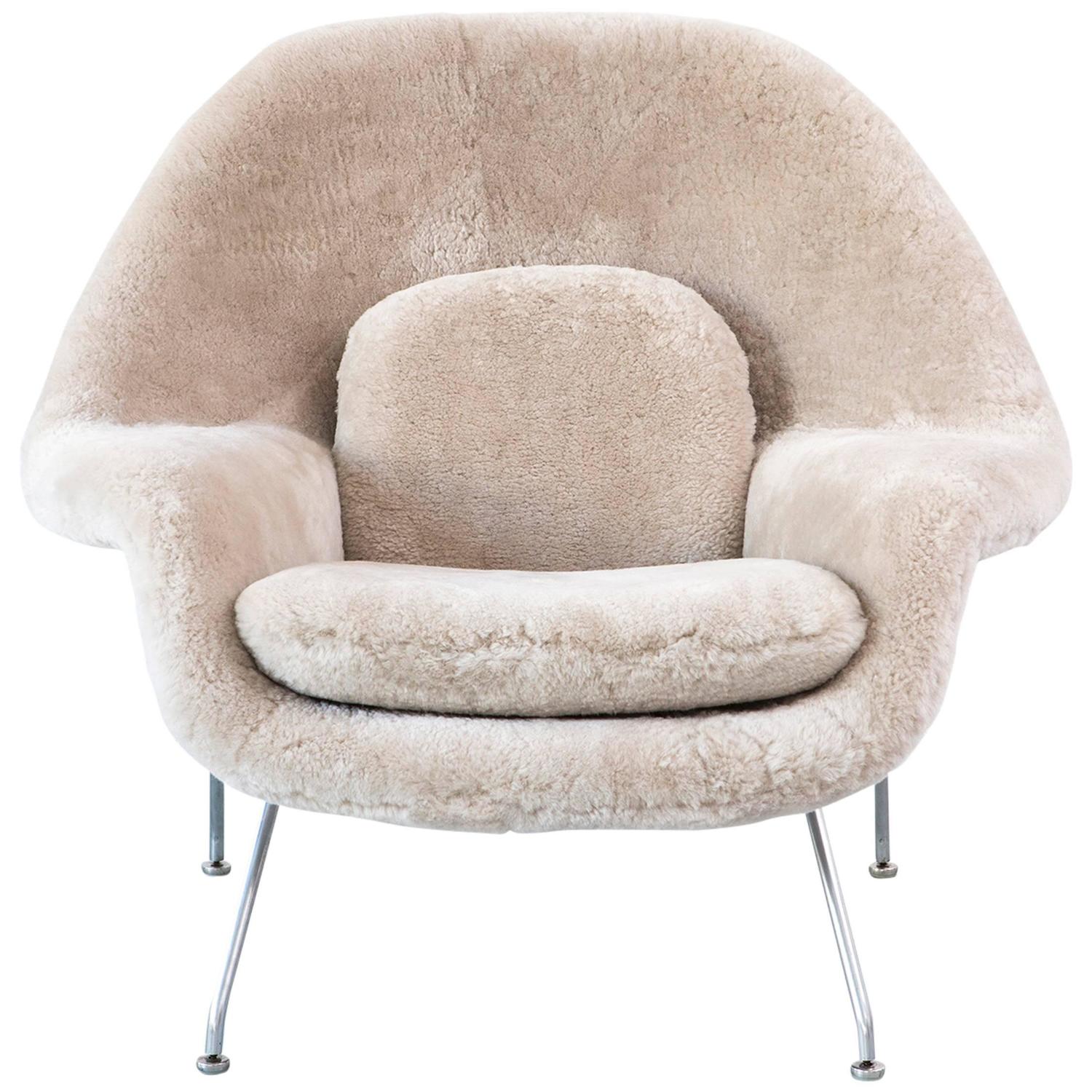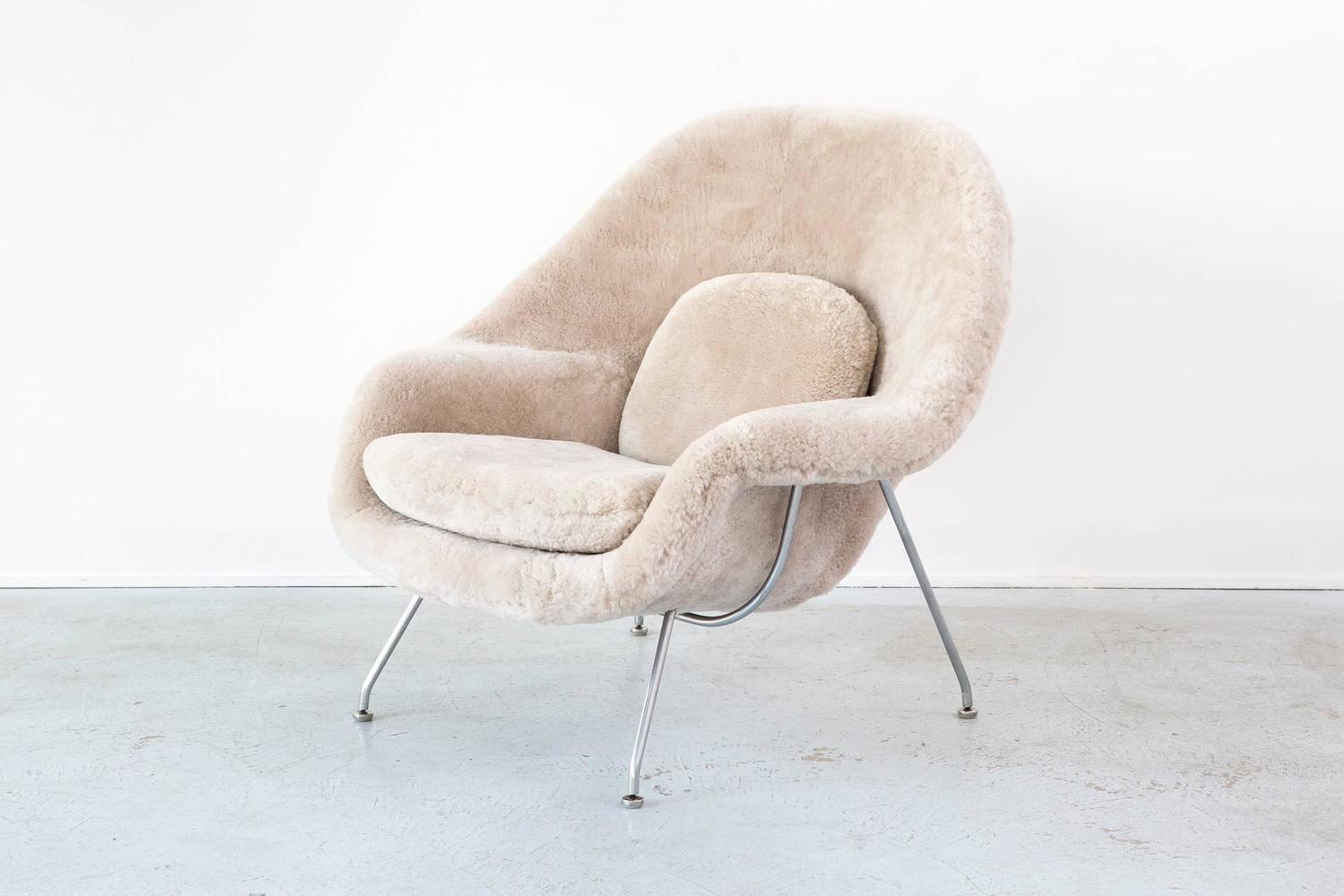The History of the Womb Chair

The Womb Chair, a celebrated icon of mid-century modern design, has captivated audiences with its unique form and unparalleled comfort since its inception. Its history is intertwined with the visionary design philosophy of its creator, Eero Saarinen, and the artistic spirit of the era.
The Origins of the Womb Chair
The Womb Chair’s genesis can be traced back to 1948, when the renowned Finnish-American architect and designer Eero Saarinen was commissioned by the Knoll furniture company to create a series of chairs for the living room. Saarinen’s goal was to design chairs that offered a sense of intimacy and comfort, a departure from the rigid and formal furniture prevalent at the time. He envisioned a chair that would envelop its occupant, providing a sense of security and relaxation.
The Inspiration Behind the Design
Saarinen’s inspiration for the Womb Chair was rooted in his desire to create a chair that would evoke a sense of being “held” or “cocooned.” He drew inspiration from the organic forms found in nature, particularly the human body and the womb. Saarinen believed that the chair’s shape would provide a sense of security and comfort, similar to the feeling of being cradled in the womb.
The Evolution of the Womb Chair’s Design
Saarinen’s initial prototypes for the Womb Chair were made of plaster, which allowed him to experiment with different shapes and forms. He eventually settled on a design that was both sculptural and functional, with a rounded, organic shape that would comfortably accommodate the human body. The final design was achieved through a combination of intuition and experimentation, with Saarinen meticulously refining the chair’s curves and proportions until he achieved the desired level of comfort and aesthetic appeal.
Materials Used in the Womb Chair’s Construction, Mid century modern womb chair
Over the years, the Womb Chair has been produced using a variety of materials, each contributing to its unique character and longevity.
- Early models of the Womb Chair were constructed using a molded plywood frame, which provided a strong and durable base for the chair’s organic form.
- Later versions of the chair incorporated a steel frame, which offered greater stability and support.
- The chair’s upholstery has also evolved over time, with a variety of fabrics and leathers being used to create a range of textures and colors.
Design Elements of the Mid-Century Modern Womb Chair: Mid Century Modern Womb Chair

The Womb Chair, designed by Eero Saarinen in 1948, embodies the essence of mid-century modern design. Its distinctive features and innovative approach to comfort and aesthetics have cemented its place as an iconic piece of furniture. This section will delve into the key design elements that contribute to the Womb Chair’s timeless appeal.
Organic Shapes and Curves
The Womb Chair is renowned for its fluid and organic forms. Saarinen’s inspiration stemmed from the desire to create a chair that enveloped the user like a womb, offering a sense of security and comfort. This concept is evident in the chair’s gently sloping back, wide seat, and rounded arms. The chair’s overall shape is reminiscent of a large, comfortable cocoon, inviting relaxation and introspection.
Materials Used in Mid-Century Modern Womb Chairs
The Womb Chair’s materials play a crucial role in its mid-century modern aesthetic. The original design featured a fiberglass shell, a material that was gaining popularity in the 1940s and 50s for its versatility and durability. The fiberglass shell allowed for the creation of complex, organic shapes that were difficult to achieve with traditional materials. The chair’s base was typically constructed from polished aluminum or steel, reflecting the era’s fascination with industrial materials.
Color Palettes and Finishes
Mid-century modern Womb Chairs are often associated with a muted and sophisticated color palette. Neutral tones like beige, gray, and black were favored, creating a sense of calm and understated elegance. These colors were often paired with vibrant accents, such as pops of mustard yellow, turquoise, or teal, adding a touch of personality and visual interest. The chair’s finish also played a significant role in its aesthetic. Polished aluminum and steel bases offered a sleek and modern look, while the fiberglass shell could be left with a natural finish or painted in various colors.
Functionality and Comfort of the Womb Chair

The Womb Chair, designed by Eero Saarinen in 1948, is renowned for its exceptional comfort and functionality. Its unique design, inspired by a womb-like shape, aims to envelop the sitter and provide a sense of security and relaxation. This chair transcends the typical boundaries of furniture, offering a sanctuary where one can escape the demands of everyday life.
Ergonomic Features of the Womb Chair
The Womb Chair’s ergonomic features are key to its unparalleled comfort. The chair’s deep, contoured seat and high back provide ample support for the body, allowing the user to sink into the chair and fully relax. The chair’s wide, rounded arms offer additional support and create a sense of enclosure.
- Curved Shape: The chair’s distinctive curved shape is designed to conform to the natural curves of the human body. This provides a sense of comfort and support, minimizing pressure points and promoting a relaxed posture.
- High Back: The high back of the Womb Chair offers excellent head and neck support, reducing tension and promoting a sense of privacy and seclusion. This feature is particularly beneficial for those who want to escape the distractions of the world and enjoy a moment of peace and quiet.
- Wide Arms: The wide, rounded arms of the Womb Chair provide ample support for the arms and forearms, allowing the user to relax and recline comfortably. The arms also act as a barrier, creating a sense of enclosure and privacy.
User Experiences and Anecdotes
Numerous users have described the Womb Chair as a haven of comfort and relaxation. Its unique design allows for a range of postures, from sitting upright to lounging back, making it ideal for reading, napping, or simply enjoying a quiet moment.
“The Womb Chair is like a hug in the form of a chair. It’s so comfortable that you could easily spend hours in it without even noticing the time passing by.” – Anonymous user
Comparison with Other Mid-Century Modern Chairs
While other iconic mid-century modern chairs, such as the Barcelona Chair or the Eames Lounge Chair, are known for their comfort and elegance, the Womb Chair stands out for its unique combination of comfort and functionality. The Barcelona Chair, with its leather upholstery and minimalist design, is more suited for formal settings. The Eames Lounge Chair, with its iconic silhouette and plush cushioning, offers a luxurious and inviting experience. However, the Womb Chair’s enveloping design and ergonomic features provide a truly unparalleled level of comfort and relaxation.
Modern Interpretations of the Womb Chair

The Womb Chair’s enduring appeal is evident in its continued influence on contemporary furniture design. Designers today draw inspiration from its iconic form and innovative functionality, creating reinterpretations that reflect modern sensibilities and technological advancements. These interpretations explore new materials, color palettes, and design approaches while preserving the essence of Eero Saarinen’s original vision.
Contemporary Designers Inspired by the Womb Chair
The Womb Chair’s legacy extends beyond its original design, inspiring a new generation of designers to create their own interpretations. Contemporary designers like Marcel Wanders, Patricia Urquiola, and Karim Rashid have all acknowledged the Womb Chair’s impact and incorporated its principles into their work.
- Marcel Wanders, known for his whimsical and playful designs, has created chairs that echo the Womb Chair’s organic form and enveloping comfort, often incorporating vibrant colors and playful patterns.
- Patricia Urquiola, a renowned Spanish designer, has explored the use of innovative materials and textures, reinterpreting the Womb Chair’s silhouette with a modern sensibility.
- Karim Rashid, known for his futuristic and bold designs, has created chairs that draw inspiration from the Womb Chair’s organic form, but with a more streamlined and minimalist aesthetic.
Modern Reinterpretations of the Womb Chair
Contemporary designers have explored a range of variations in materials, colors, and shapes, offering a diverse selection of modern reinterpretations of the Womb Chair.
- Materials: While the original Womb Chair was crafted from fiberglass and upholstered in luxurious fabrics, modern interpretations utilize a wider array of materials, including wood, metal, and even sustainable materials like recycled plastic and bamboo. This allows for greater flexibility in design and cost-effectiveness.
- Colors: The original Womb Chair was available in a limited range of colors, but modern interpretations embrace a wider spectrum, from classic neutrals to bold and vibrant hues. This allows for greater personalization and integration into diverse interior design styles.
- Shapes: While the original Womb Chair featured a distinct, organic shape, modern interpretations explore variations in its silhouette, from more angular and geometric forms to softer, more fluid curves. This reflects the evolving aesthetic preferences of contemporary design.
Comparison of the Original Womb Chair to Its Modern Counterparts
While modern interpretations draw inspiration from the Womb Chair’s iconic form and principles, they also incorporate contemporary design elements and technologies.
- The original Womb Chair was designed for a specific purpose, offering a sense of enveloping comfort and intimacy. Modern interpretations often retain this core functionality, but may incorporate features like adjustable backrests, integrated footrests, or built-in lighting to enhance comfort and functionality.
- The original Womb Chair was primarily crafted from fiberglass and upholstered in luxurious fabrics, reflecting the materials and production techniques of the mid-century modern era. Modern interpretations often utilize a wider array of materials, including sustainable and eco-friendly options, reflecting a shift towards more responsible design practices.
- The original Womb Chair’s design was driven by a focus on organic forms and fluid lines, reflecting the aesthetic sensibilities of the mid-century modern movement. Modern interpretations may incorporate more angular and geometric forms, reflecting a shift towards a more minimalist and contemporary aesthetic.
Mid century modern womb chair – The womb chair, a cocoon of comfort designed by Eero Saarinen, embodies the mid-century modern ideal of organic form and functionality. Its smooth, flowing curves invite relaxation, a stark contrast to the sharp angles of the era’s other iconic pieces like the eames molded plastic chair.
While the Eames chair celebrated innovation in materials and mass production, the womb chair remains a symbol of domestic intimacy, a sanctuary within the modern home.
The mid-century modern womb chair, with its enveloping curves and plush upholstery, is a testament to the era’s fascination with comfort and design. This iconic piece, often associated with the iconic Eero Saarinen, embodies the spirit of modernism, prioritizing functionality and aesthetic appeal.
While the womb chair offers a cocooning experience, the finley swoop arm accent chair provides a different kind of comfort, with its sleek lines and sweeping armrests. Both chairs, though distinct in their design, share a common thread – they offer a haven for relaxation and contemplation, inviting you to lose yourself in the moment.
